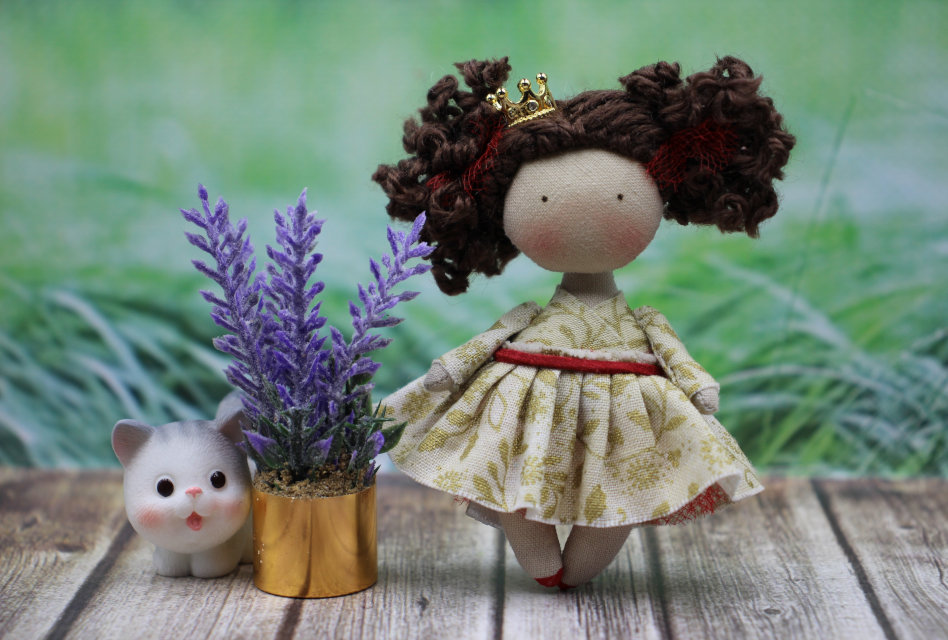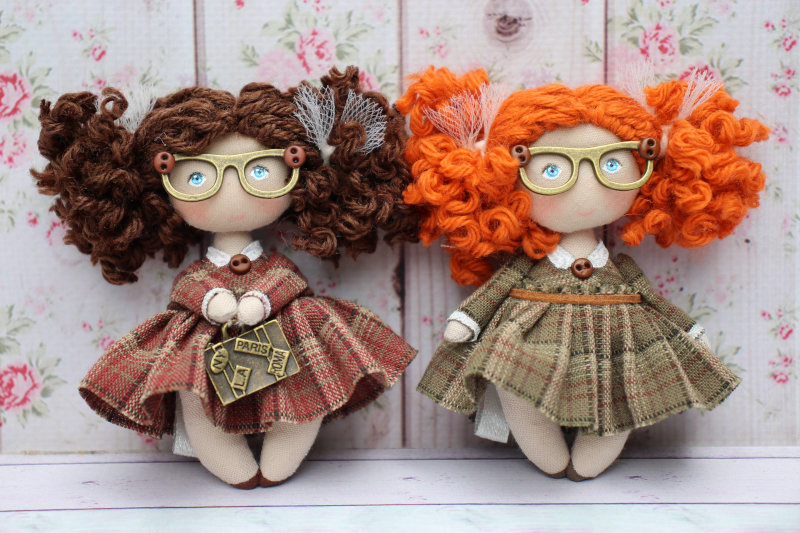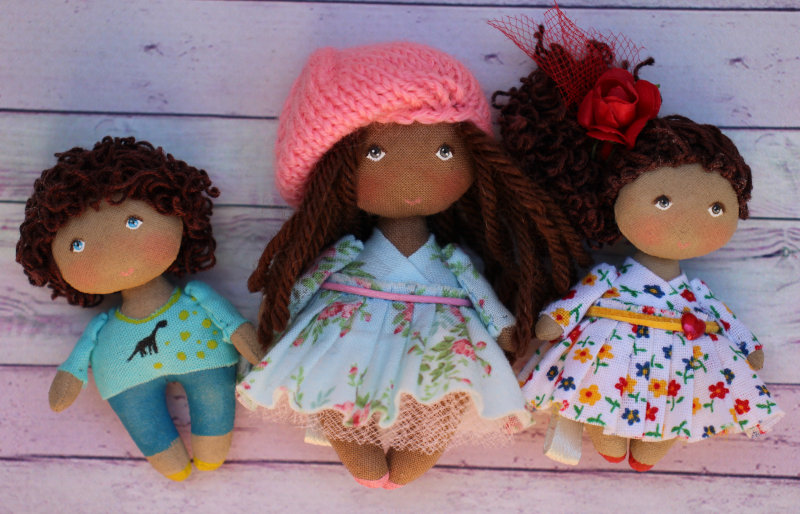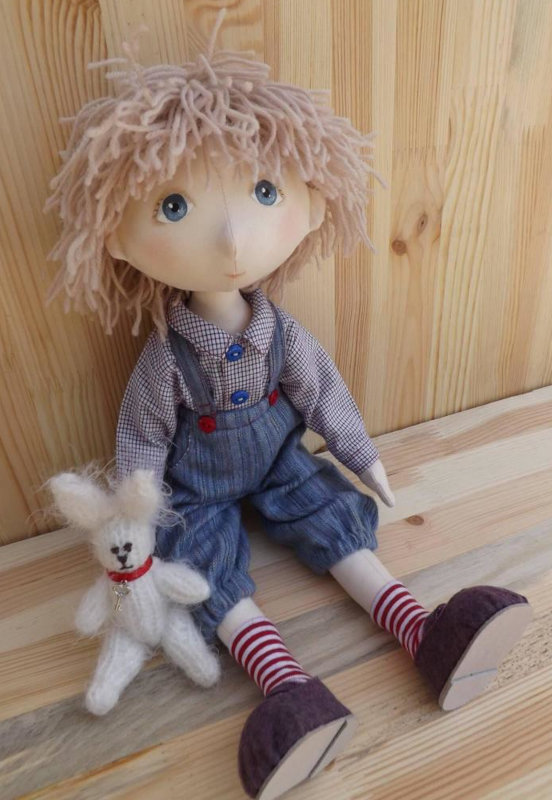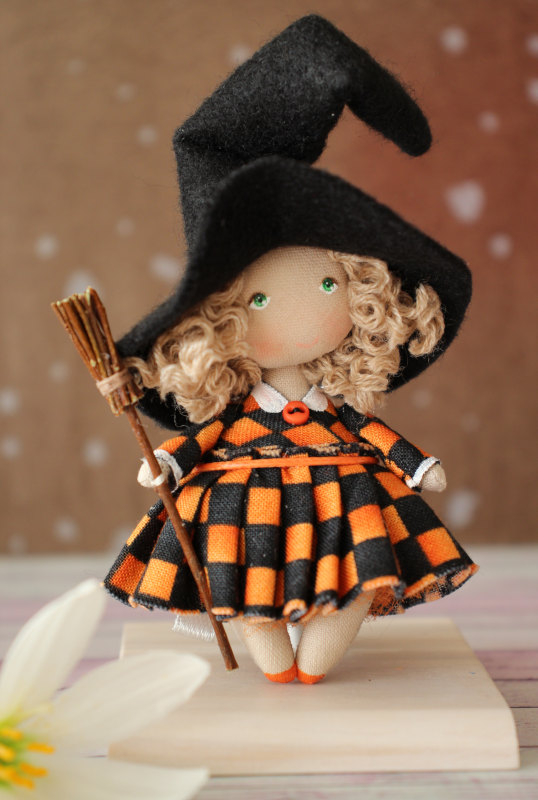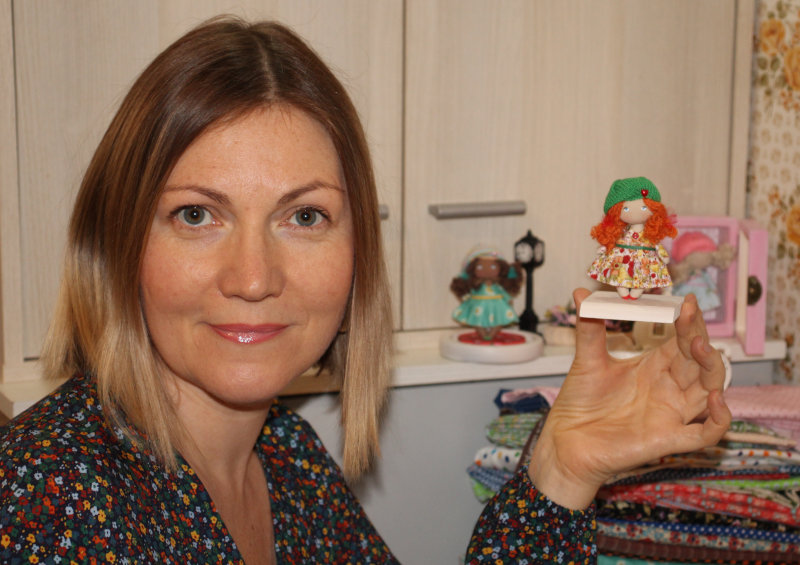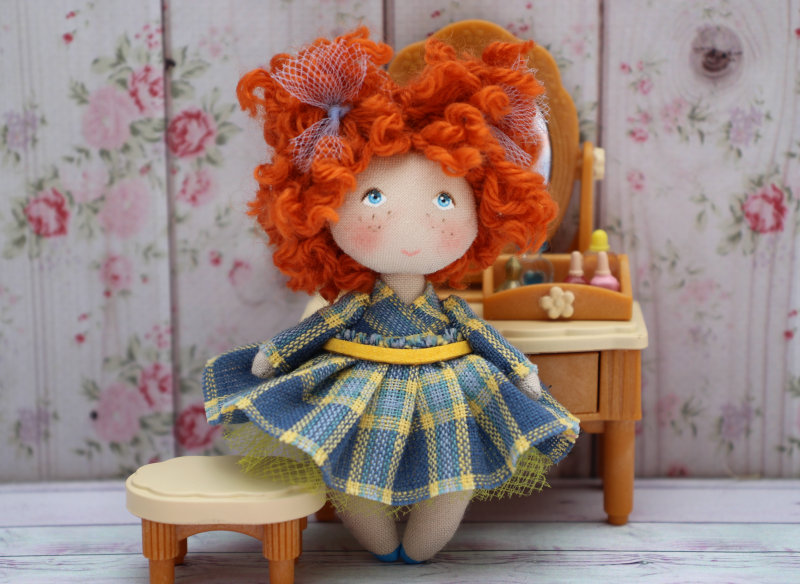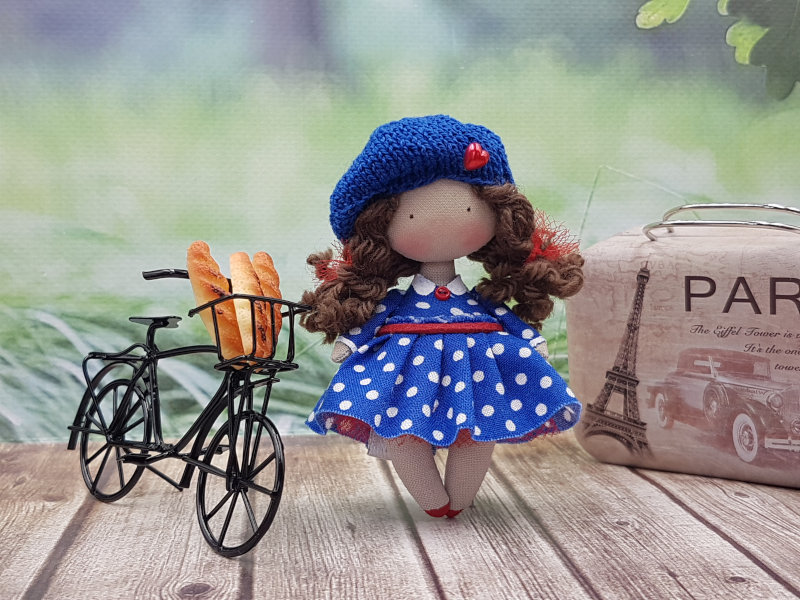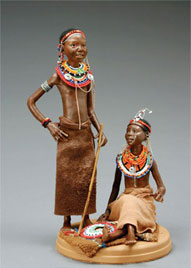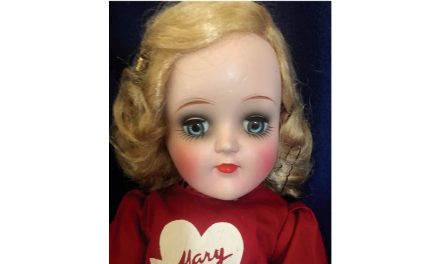For French dollmaker Natasha Tereza, what began as a creative way to relax in her free time has become a way to share her love of art with a larger audience. She started selling her miniature cloth dolls and dollhouse items under the name Moppet Dolls in 2017, but her creative roots run much deeper.
“I have been making crafts always and everywhere, as long as I can remember,” she said. “I was sewing clothes for dolls and for myself by hand and then with my grandmother’s sewing machine around 7 years old. Then making toys out of fabric, cotton, papier mâché, and clay.
“By education I am a philologist [the study of the history of language] and teacher of Russian and French. In my adult life, sewing, knitting, embroidery, crocheting, were a rest, an opportunity to relax and escape from the stress of the working day and week. I am interested in different mediums — wood, glass, metal, clay, textiles, foam. I often attend classes to discover the principles of working with different materials and techniques, but textiles remain my main love.
“I love when out of nothing, from a piece of cloth, a simple rope or paper, you get a flower, a cute animal, or a pretty doll. When I became a mother, it was curious to see how my daughter experiences the same feeling — admiration and joy from this transformation. I was sewing a horse for her, and Manon shouted in delight ‘Mom! It’s a horse! She has a mane!’ Because half an hour ago, there was no horse, just a piece of cloth, thread, and a couple of buttons. It is a pure magic for me.”
Going Small
Tereza started out making larger dolls, working with polymer clay and papier mâché as well as fabric, and learning to use wool fibers to make realistic hair. “But most of all I liked to sew clothes for my dolls,” she said. “I started making small dolls for testing, to improve my techniques for cutting, stuffing dolls, painting. And it so happened that these dolls turned out to be livelier and more emotional than the large ones. They somehow immediately determined their character.
“One of the very first buyers of these dolls told me how she played with her granddaughters in a dollhouse, and this idea captivated me and my daughter. Now we have our own dollhouse in which the Moppet dolls live. These dolls are only about 8 cm or just over 3 inches tall. The 1/12 scale is also well-suited for the pockets of school bags, as a comforting object or a lucky charm to carry in a handbag, or simply a small object of art that looks at you every day. The Moppet Doll is tiny, but she knows how to love, and if her arms were a little bigger, she would gladly hug you, share her happiness and harmony with great joy.
“Seeing that my dolls gave real pleasure to people who saw them in exhibitions and shows, I continued to do them, and all the messages and encouragement I get every day keep me going. I want to believe that my little dolls make the world a little better. That they can make someone smile, to forget their anxiety, to remember what they were at 7 years old, or to wake up the child who is in each of us.”
Making Tiny Treasures
Creating each new doll at such a small scale requires a steady hand and meticulous attention to detail, starting with selecting the right fabrics, Tereza said. “I am a real connoisseur and collector of fabrics. Cotton patchwork fabrics from the U.S. or Japan are best for my dolls. These fabrics are distinguished by high fiber quality and very precise pattern printing. Quality always plays a huge role, but it’s incredibly important for a miniature. A miniature does not forgive mistakes — everything must be perfect!
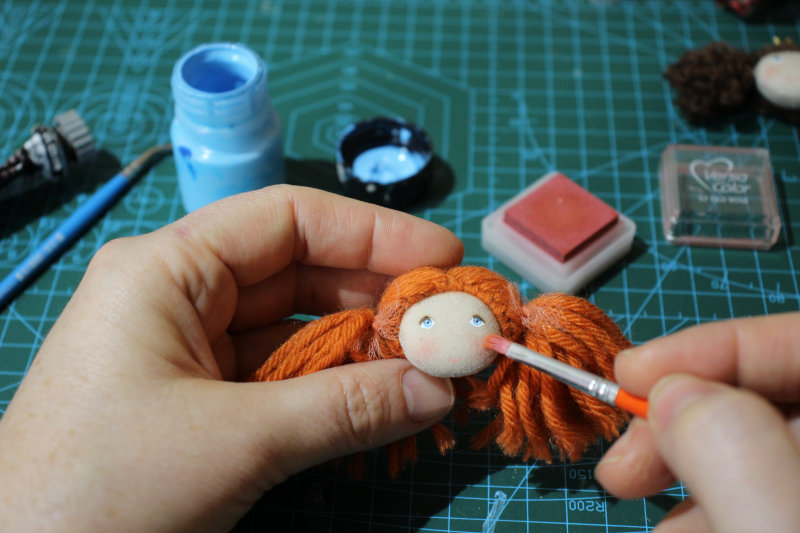
“I work in acrylics for the eye paint, then in oils, and finally in dry pastels for the makeup. But like a painting, it is then necessary to fix the details well with a special varnish that will keep the doll intact for many years. The work of the eyes and the face is one of the most complex stages for me, where I am hardly satisfied, because it is the moment when we try to give life to the doll, a touching, happy or charming look.
“The hats or certain clothes are sometimes knitted, and since the dolls are very small, I have to use fine threads and the smallest knitting needles, which are nowhere to be found in shops. I inherited mine from my grandmother, and I keep them as a treasure.
“When I start making a new doll, I don’t have a clear idea or sketch for what it will be like. I have fabrics, beautiful bright threads and yarns, buttons, paints, a garden and a sky outside the window. And I am singing.
“I like to hang out in art and fabric stores and museums for ideas and inspiration. The Saint-Pierre district in Paris is a paradise with all its fabric shops gathered in the same district to search for a treasure. Also, I regularly create personalized dolls or doll families for my collectors. The buyer gives the characteristics of the characters — hair color, skin, eyes, accessories, characteristic features.
“This year I want to make memories — for a collector to send me a photo, and I make a scene from this photo. The characters and the entire scene will be placed inside a glass dome and illuminated. I’m also looking forward to returning to exhibitions to meet my fans in person, such as the International DollsHouse Show and Dolls Rendez-vous fair in Paris, or the “Poupées d’hier et d’oeuvre” fair in Aix en Provence, but the future is still very uncertain in 2021, and I do not know if the shows will be able to take place.”
Find out more Natasha Tereza’s website and Etsy shop

